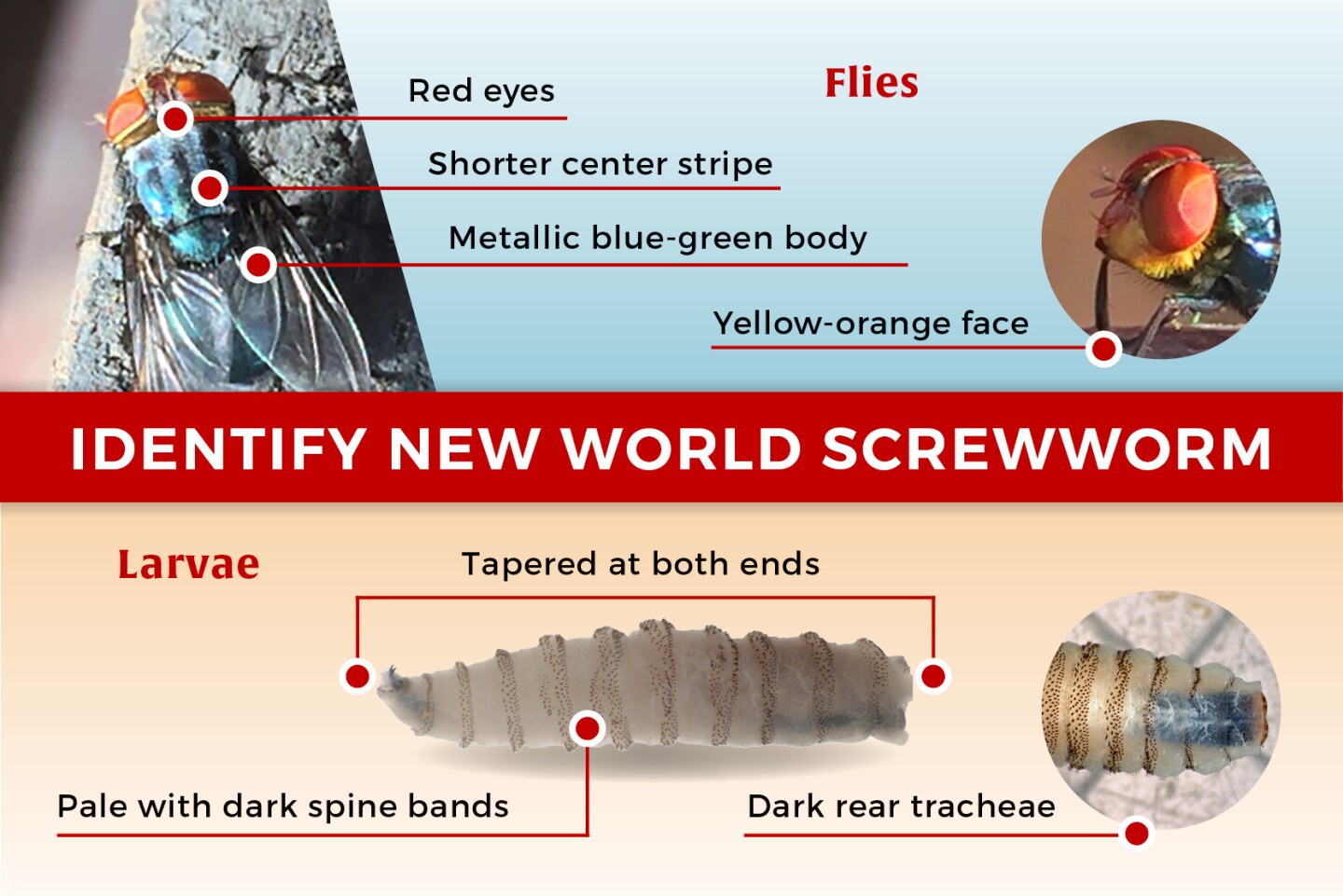Context:
Recently, the United States has reported its first confirmed human case of New World screwworm infestation in decades.
About New World Screwworm:
· It is known for its flesh-eating larvae, which burrow into the tissue of warm-blooded animals—and occasionally, humans.
· These parasites are named after their screw-like motion as they bore into living flesh.
· The female screwworm fly is especially dangerous, as she lays eggs in open wounds or natural openings such as the nose, mouth, or ears.
· A single female can lay up to 300 eggs at a time, totaling 3,000 eggs over her 10–30-day lifespan.
What Are the Symptoms of Infestation?
Infestations can be extremely painful and potentially life-threatening if not treated promptly. Key symptoms include:
· Persistent, non-healing wounds or sores
· Bleeding from the affected area
· Sensation of movement within the wound
· Foul-smelling discharge from the site
If left untreated, the infestation can spread to vital tissues, causing sepsis or even death. Early diagnosis and removal of larvae are critical.
Common Parasitic Diseases:
· Lymphatic Filariasis (Elephantiasis): Caused by Wuchereria bancrofti and Brugia malayi, transmitted by mosquitoes, leading to swelling and disability.
· Malaria: Caused by Plasmodium species, transmitted by female Anopheles mosquitoes. Symptoms range from fever to severe complications like seizures.
· Toxoplasmosis: Caused by Toxoplasma gondii, often transmitted through undercooked meat; dangerous for immunocompromised individuals.
· Amoebiasis: Caused by Entamoeba histolytica, spreads via contaminated water, causing diarrhea and potentially fatal complications.
· Giardiasis: An intestinal infection from Giardia lamblia, often spread through unclean water.
· Schistosomiasis: Caused by blood flukes, spread through contact with contaminated freshwater.
· Leishmaniasis: Spread by sandfly bites, affecting skin or internal organs.







